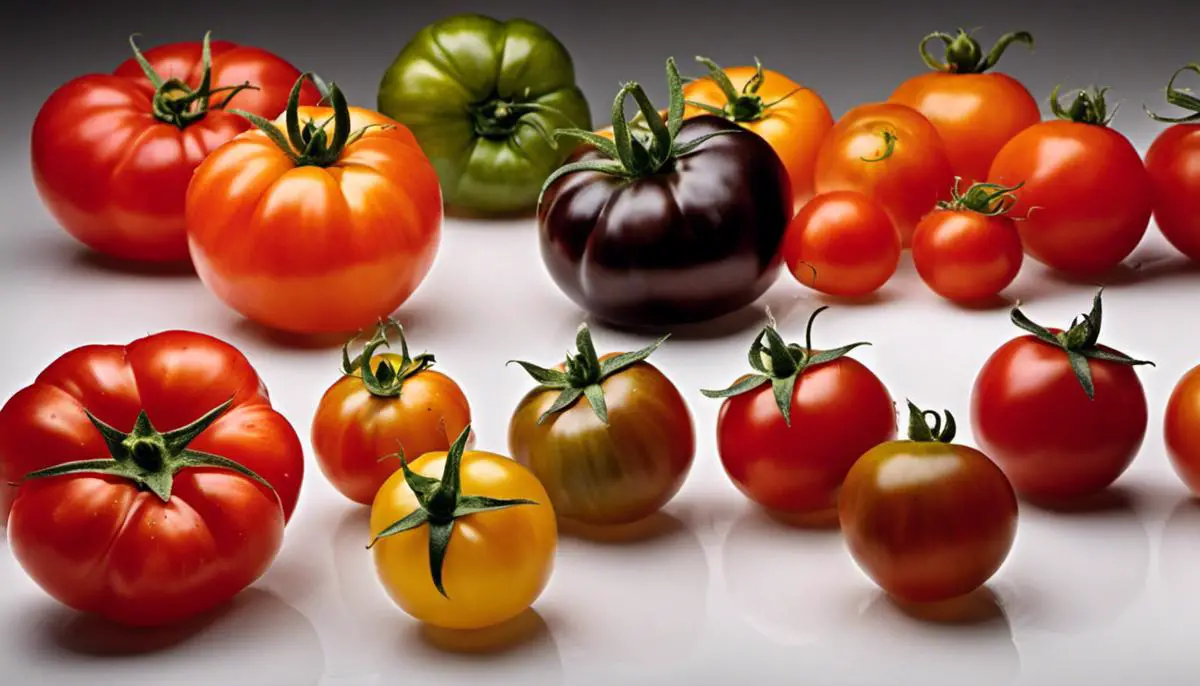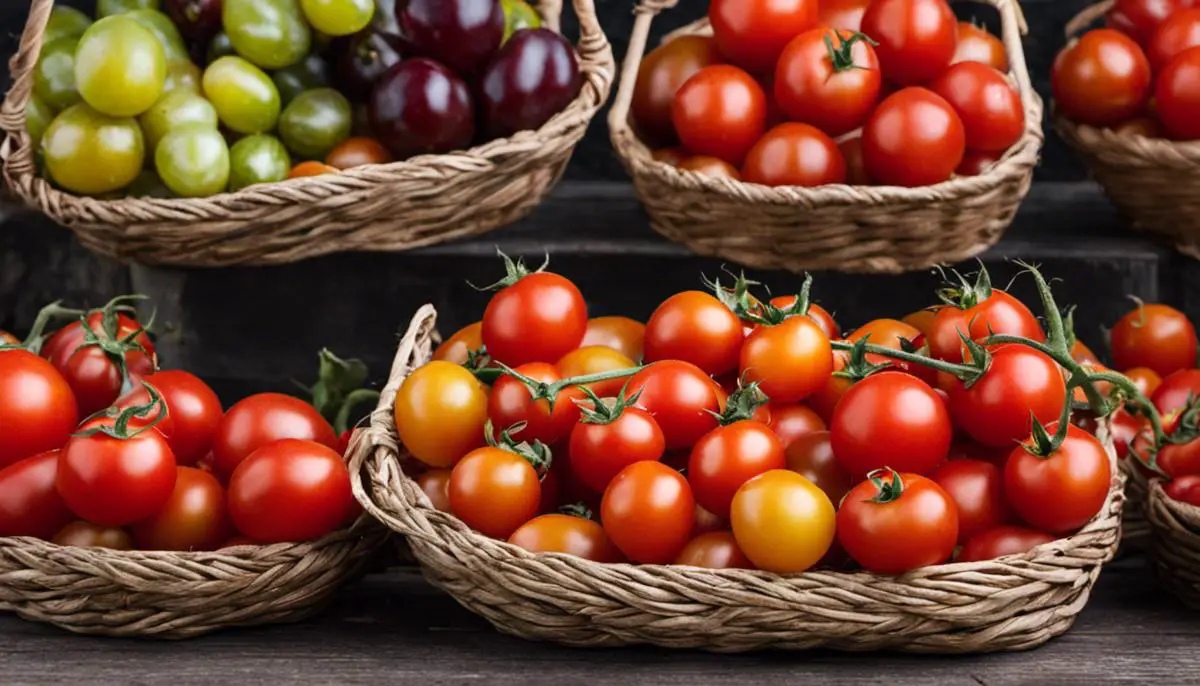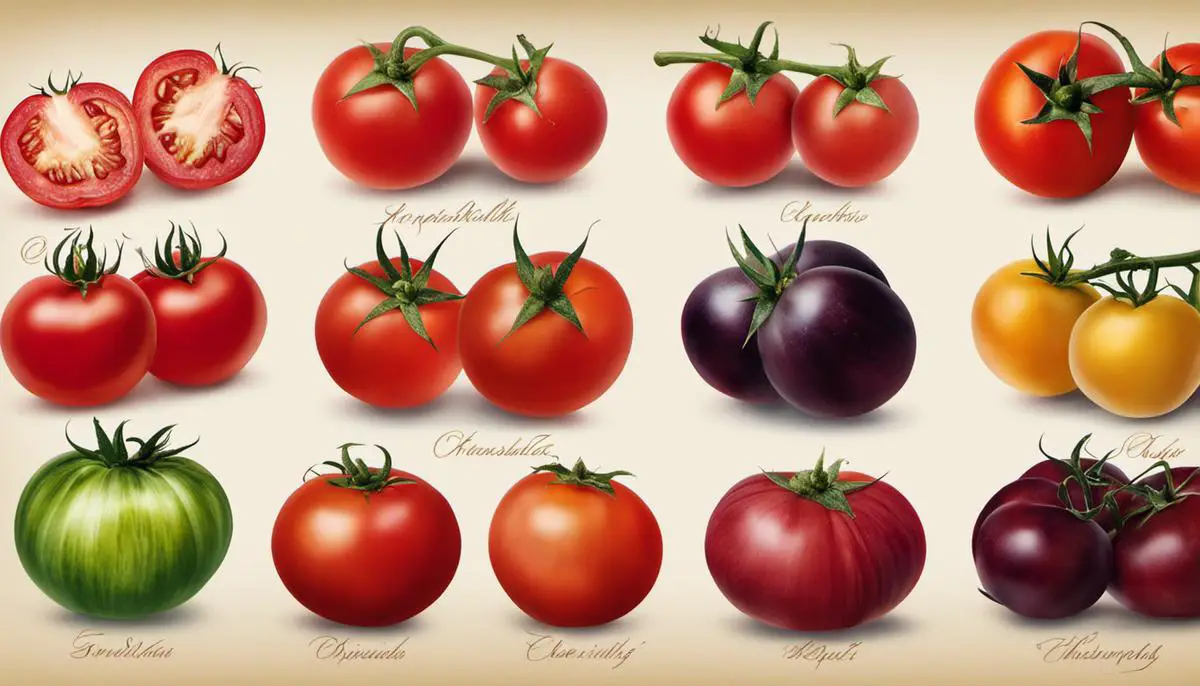Tomatoes, often considered a gardeners’ delight, come in a myriad of varieties such as beefsteak, cherry, plum, and heirloom, each with their own unique growing needs. Understanding these diverse varieties and their specific growing requirements is crucial to successful tomato cultivation. Of equal importance is learning about the environmental conditions best conducive to their growth, including planting depth, spacing, watering, and fertilizer needs. Additionally, the path to successful tomato gardening also requires a keen awareness of the pests and diseases that can threaten these fruitful plants, like caterpillars, aphids, blight, and wilt. This knowledge allows you to effectively prevent and manage these common pitfalls, ensuring a bountiful harvest from your tomato plants.
Understanding Tomato Varieties
The Vivacious Vocabulary of Tomato Varieties: Decoding the Differences
There’s a whole world of tomato varieties out there, waiting to be discovered and enjoyed. Each one, with its own unique flavor profile, size, color, and growth habit, makes the journey of discovery a delightful adventure. Trust this when it’s said, becoming a tomato connoisseur can add a new layer of excitement to the gardening experience.
Reader Poll: What online courses would interest you?
Understanding the differences between tomato varieties helps not only with choosing the right ones for a home garden, but also with culinary endeavors, ensuring the perfect tomato is picked for every dish. Let’s slice right into it!
- Cherry Tomatoes: Jacks-of-all-Trades
- Beefsteak Tomatoes: The Heavyweights
- Heirloom Tomatoes: The Classics
- Plum Tomatoes: The Sauce Superstars
- Grape Tomatoes: The Crunchy Bunch
- Green Tomatoes: An Unripe Surprise
Small yet robust in flavor, cherry tomatoes are the tiny globes of delight that pop with explosive taste in one’s mouth. They can range from a half to an inch in diameter and are ideal for salads, roasting, grilling, or an on-the-go snack. What sets them apart is their uniform sweetness that can add a vivacious burst to any recipe.
If tomatoes had a heavyweight champion in their category, it would indeed be the Beefsteak variety. Large, juicy, and meaty, these tomatoes can weigh up to two pounds! They are perfect for slicing and dicing, filling up a sandwich or burger with their dense and delectable pulp.
Subscribe to our newsletter!
Distinctive and often beautifully irregular, heirloom tomatoes are treasured for their incredible, old-fashioned flavor profiles. The term “heirloom” denotes any tomato cultivar that has been passed down, through several generations, maintaining the same traits throughout. These tomatoes provide an exceptional dining experience, with their wide range of colors, shapes, and especially, tastes.
Longer, thicker, and fewer seeds – that’s what makes Plum tomatoes the go-to variety for making sauces, purees, and pastes. Known also as Roma tomatoes, their less juicy character simplifies cooking and concentrates the flavor, making them a star ingredient in various Italian recipes.
As the name suggests, grape tomatoes are shaped similarly to their namesake, with a thicker skin than cherry tomatoes. Their firm texture and less watery interior make them great for salads, as they retain their shape and crunch even after cutting.
Green tomatoes aren’t a separate variety but are simple, unripe tomatoes. Picked before they reach maturity, they have a sharper flavor and a crisp texture compared to their ripe counterparts. You might remember them from the movie Fry Green Tomatoes or even stumbled upon the notorious Southern recipe due to which they’re quite popular.
Each of these tomato varieties has its own charm and application, and knowing the difference can add an interesting dimension to the cooking or gardening experience. So, why not take this knowledge as a sign to start exploring the extraordinary world of tomatoes? Be prepared to be surprised and tantalized, and of course, to never look at tomatoes the same way again!

Optimal Tomato Planting and Care
After immersing ourselves in the diverse and vibrant world of tomato varieties, it’s high time we dig into the practical steps of planting and caring for these juicy jewels of the garden! Whether you’re hoping to whip up homemade pasta sauce with plum tomatoes or looking to add some fresh tastes to your salads with cherry tomatoes, understanding the basics of tomato cultivation is essential.
First things first, let’s talk about pre-planting preparations. Remember, timing and temperature are crucial for tomato seedlings. It’s recommended to start seeds indoors 6 to 8 weeks before the last spring frost – usually when the temperatures consistently stay above 60°F (16°C).
Choose a buoyant and well-draining soil mix, preferably one infused with compost or aged manure for a nutritional boost your seedlings will thank you for. Small, individual containers are best for planting-to avoid root disturbance later on.
Moving on to planting, place a couple of seeds in each pot. A depth of 1/4-inch will suffice; after all, we want our insistent little seedlings to have an easy escape to sunlight! Water them carefully, ensuring the soil is moist but not overly waterlogged.
Placement is key; our leafy friends need ample sunlight to grow strong. A sunny south-facing window will do the trick, or a fluorescent light kept 6 inches from the seedlings for 14-16 hours a day.
After about 7-10 days of intimate sunlight sessions and proper watering, the seeds will germinate, and you’ll see tiny leaves poking above the soil. Once they’ve developed two sets of true leaves, it’s time to give them a little more space to grow. They require a roomier environment, so think about repotting them.
Before letting them face the harsh realities of the outside world, expose the young plants to the great outdoors gradually. This process is known as “hardening off” and can take around a week. Start with a couple of hours of indirect sunlight and sheltered breezes, gradually increasing their exposure over time.
Finally, when it’s time to pick them a permanent home in your garden or pots, follow this rule of thumb: Plant them deep. Yep, you heard it right! Tomatoes are unique in the world of veggies; their stems readily sprout roots when buried, which leads to a stronger root system.
Now, for continued care. Watering tomato plants directly at the root, rather than from overhead, helps prevent disease and optimizes growth. Around 1-2 inches of water per week is the sweet spot. Additionally, regular feeding with a tomato-specific or all-purpose fertilizer can maintain their healthy growth.
Staking or caging your tomato plants prevent fruits from touching the ground and provides support to the growing plant. Following these fundamental rules, anyone can cultivate their personal tomato Eden.
Honestly, isn’t gardening a magical process? Planting a tiny seed, watching it grow, and then getting to enjoy the fruits of all your hard work… truly, the joys of tomato-growing are ripe for the picking. Let’s dive in, and before you know it, you’ll be up to your elbows in fresh, flavorful tomatoes – a true testament to the wonders of your green thumb!

Pests and Disease Management
Safeguarding Your Tomato Patch: A Guide on Pest and Disease Control
Nourishing your luscious, red, juicy tomatoes from seed to fruit can be incredibly rewarding. Yet, along this journey, our tomato plants can sometimes face challenges in the form of pests and diseases. Given the hard work and care that these plants demand, protecting them becomes more than just a chore; it forms the crux of our thriving garden. It’s not all doom and gloom, however. Let’s dive into some useful remedies used by greenhouse growers, large-scale farmers, and hobbyist gardeners alike.
First on the agenda would be rotating your crops. It is a nifty gardening technique that can break the lifecycles of both pests and diseases. This method involves swapping the location of your tomato plants with other crops, say, every season. This not only prevents the build-up of soil-borne diseases but can also dramatically reduce pest populations.
Next up is mulching, an invaluable strategy to keep the soil healthy and the plants robust. Aside from maintaining the moisture level, a good layer of organic mulch can also block soil-borne diseases from splashing onto the tomato leaves during watering or rain. And the icing on the cake? Mulch also discourages pests, like aphids and tomato hornworms, from making a home in your precious tomato patch.
Thirdly, regular pruning helps in keeping diseases at bay. Removing the lower leaves of the tomato plants, especially those touching the soil, can prevent fungal infections. Besides this, it allows better air circulation, reducing the humidity that many diseases favor.
Moving on, timely permits us to discuss pest traps and barriers. If tomato pests such as hornworms, slugs, or whiteflies are a constant battle, consider using non-toxic pheromone traps or row covers respectively. These work like a charm and can drastically cut down on tomato predators.
One cannot emphasize enough the value of introducing beneficial insects to your garden as well. These helpful creatures, such as ladybugs and green lacewings, are nature’s own pest controllers. They feed on detrimental insects, thereby keeping your tomatoes unharmed.
For those occasional problems that still sneak through your defenses, consider using organic pest and disease sprays as a last resort. Several tried and true recipes, like homemade garlic or pepper sprays, can stave off invaders without causing harm to your plants or the environment.
Finally, remain vigilant. The joy of tomato-growing lies in regular care and keen observation. Be quick to spot any signs of unusual spots, curling leaves, or even pests themselves. Prompt detection is crucial, it allows you to take immediate action.
There you have it. Implementing these preventative measures and utilizing helpful remedies can keep your tomato plants thriving, ensuring a satisfying harvest season. So, cultivate with love, tend with knowledge, and enjoy the numerous rewards of tomato growing.

With a thorough understanding of the different varieties of tomatoes, their specific growing requirements, and optimal care methods, you are well-equipped to begin a successful tomato garden. Knowledge about common pests and diseases, and effective prevention and management strategies are key to maintaining healthy, productive plants. Remember, diligent care, observation, and prompt action when faced with potential threats, can ensure that your tomato plants thrive. Here’s to a fruitful tomato gardening experience that brings joy not just to your garden, but also to your kitchen and dining table.

